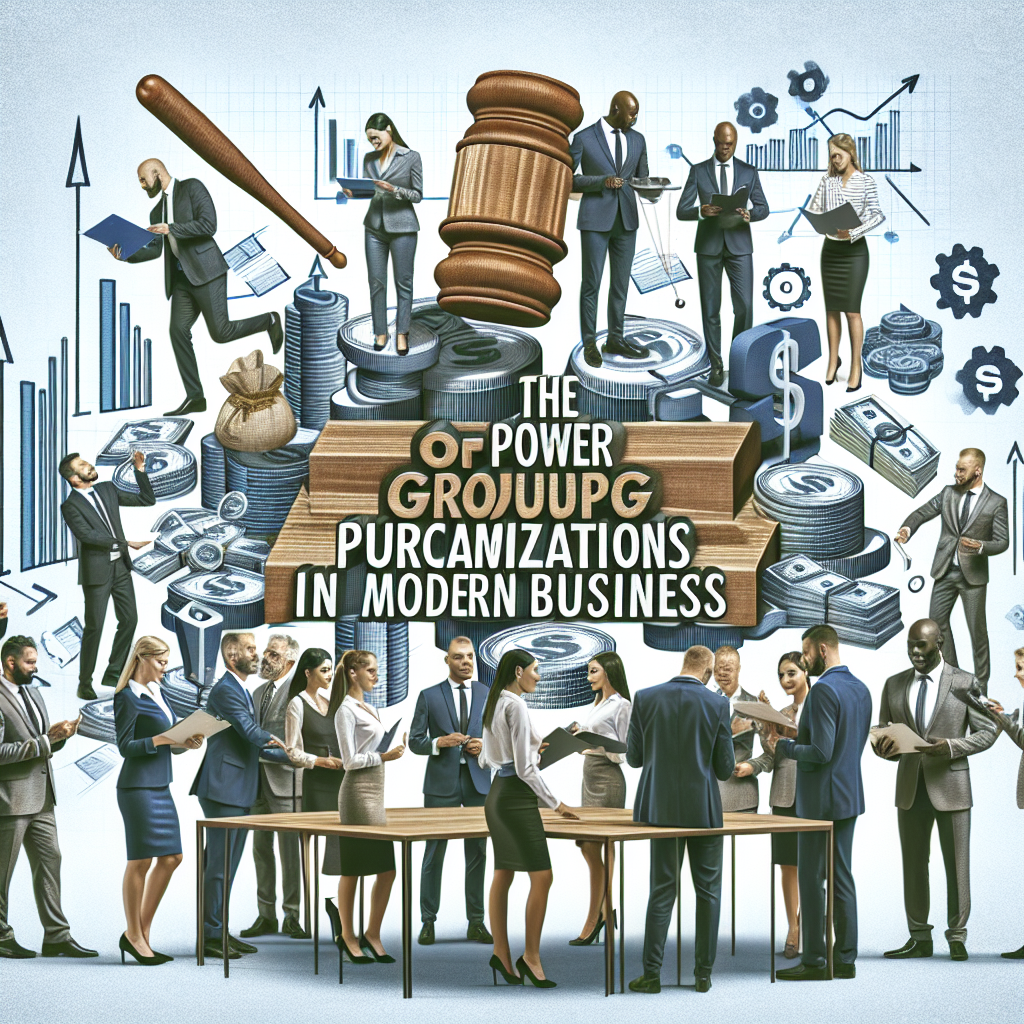Introduction
Multi-vendor procurement solutions simplify and enhance the procurement process by providing a centralized platform for supplier engagement. These solutions enable organizations to manage multiple suppliers efficiently, ensuring compliance with internal policies while maximizing cost savings, such as leveraging drastic cost reduction through collective spend.
In this article, we will explore the benefits and key features of multi-vendor procurement solutions. A case study on Hubzone Depot LLC, a certified HUBZone small business and prominent provider of these solutions, will illustrate their effectiveness in real-world applications. Hubzone Depot LLC exemplifies how such platforms can optimize procurement strategies for organizations across different sectors.
By implementing effective sourcing strategies for hiring top talent, managing tail spend efficiently, and even applying these strategies to maximize federal grant funding for nonprofits, Hubzone Depot LLC showcases the versatility of multi-vendor procurement solutions. Furthermore, these solutions can also play a significant role in boosting employee morale with break room supplies or helping businesses succeed with limited resources by embracing constraints and optimizing processes.
Understanding Multi-Vendor Procurement Solutions
Multi-vendor procurement solutions operate through a centralized marketplace that simplifies the purchasing process for organizations. This approach allows you to engage with multiple suppliers from one platform, streamlining supplier interactions and fostering competition among vendors.
Key Components of Multi-Vendor Procurement Solutions:
-
Centralized Marketplace: A unified platform where buyers can access various suppliers and products. This reduces the time spent searching for vendors and enhances the efficiency of procurement operations.
-
Supplier Engagement: The centralized marketplace facilitates seamless communication between you and suppliers. You can easily compare offerings, negotiate terms, and place orders without navigating multiple websites or systems. This aspect is crucial in supplier relationship management, which focuses on building and maintaining healthy relationships with suppliers.
-
Compliance Management: Ensuring compliance with organizational policies and regulations is vital. Multi-vendor solutions incorporate tools that help monitor supplier adherence to contractual obligations, pricing agreements, and quality standards. This is where maximizing supplier performance becomes essential, ensuring that suppliers meet the required standards.
-
Analytics and Reporting: Access to data analytics enables organizations to assess spending patterns, supplier performance, and compliance levels. These insights inform decision-making processes, driving improvements in procurement strategies. Incorporating strategic sourcing into this process can further enhance efficiency by optimizing vendor selection and management.
By integrating these components, multi-vendor procurement solutions empower organizations to enhance operational efficiency, reduce costs, and maintain compliance with internal guidelines. Utilizing a centralized marketplace ensures that you have the visibility needed to make informed purchasing decisions while engaging effectively with diverse suppliers. As a result, businesses can achieve significant savings and optimize their procurement workflows.
However, it’s important to note that such an efficient system doesn’t come without its challenges. For instance, managing a one-person procurement function can be daunting but with the right strategies such as those suggested in our article on tips for managing a one-person procurement function, it can be streamlined for better results.
Moreover, adopting a frugal approach as highlighted in our guide on the art of frugal living can also yield significant cost savings in your daily operations.
Key Features that Enhance Procurement Efficiency
Multi-vendor procurement solutions offer several essential features that significantly improve efficiency throughout the procurement workflow. These features streamline processes, reduce costs, and enhance decision-making capabilities. Key elements include:
1. Cost Comparison Tools
These tools allow you to easily evaluate prices from multiple suppliers. By providing side-by-side comparisons, you can identify the most cost-effective options for your organization. This feature not only saves money but also time spent on manual price checks.
2. Streamlined Processes
Automation plays a critical role in enhancing procurement efficiency. Multi-vendor platforms often come equipped with automated workflows that minimize manual intervention. Tasks such as order processing and invoicing are simplified, leading to faster turnaround times and reduced errors.
3. Enhanced Reporting Capabilities
Robust reporting features allow for tracking spending patterns, supplier performance, and compliance metrics. You can generate detailed reports that provide insights into purchasing behavior and identify opportunities for savings. This data-driven approach facilitates informed decision-making and strategic planning.
4. Supplier Management Tools
Effective supplier management is crucial in multi-vendor environments. These solutions often have integrated management tools that help you maintain relationships with various suppliers, ensuring consistent communication and compliance with contractual obligations.
Leveraging these key features leads to improved procurement outcomes, making it easier for organizations to manage their supply chains efficiently while maximizing value from every purchase.
For those looking to dive deeper into the world of procurement, exploring entry-level procurement jobs can be a great starting point. Additionally, understanding how to master procurement through continuous learning can greatly enhance your career trajectory in this field.
Moreover, it’s essential to recognize that procurement isn’t always smooth sailing. There are times when crisis management in procurement becomes necessary, and having strategies in place can make all the difference.
Lastly, if you’re seeking to revolutionize your procurement strategy, consider investigating the best procurement software and outsourcing companies. These resources can provide invaluable insights and tools to optimize your procurement processes.
Benefits for Suppliers in Multi-Vendor Solutions
Participating in multi-vendor procurement solutions offers several advantages for suppliers, enabling them to thrive in a competitive marketplace.
1. Increased Visibility
Suppliers gain access to a broader audience. Exposure to potential customers through centralized platforms enhances brand recognition and credibility.
2. Expanded Market Reach
These platforms connect suppliers with diverse buyers across various sectors, including public and private organizations. This expanded network opens up new opportunities for growth.
3. Higher Order Volumes
As suppliers engage with more customers, they can experience an uptick in order volumes. Increased demand often leads to greater revenue potential.
4. Streamlined Processes
Multi-vendor solutions simplify the procurement process, allowing suppliers to manage orders efficiently. This operational ease can translate into quicker delivery times and improved customer satisfaction.
5. Access to Data Insights
Suppliers can leverage analytics provided by the platform to understand purchasing patterns. These insights enable better inventory management and targeted marketing strategies.
These benefits not only enhance supplier performance but also contribute to a more dynamic procurement ecosystem, creating a win-win scenario for all stakeholders involved. For instance, understanding the importance of transparent supplier communication can build trust and drive business growth. Moreover, staying updated with top trends in supplier innovation is crucial for adapting to market changes.
As the landscape evolves, it’s essential for suppliers to be aware of procurement engineer salary trends which can influence hiring decisions and operational capabilities. Additionally, embracing diversity, equity, and inclusion (DEI) in the workplace can foster a more inclusive environment that benefits all stakeholders involved.
Lastly, understanding the differences between purchasing groups and group purchasing organizations can help suppliers navigate their options more effectively while also unlocking exclusive membership benefits that may arise from such group engagements.
The Role of AI in Optimizing Multi-Vendor Procurement Solutions
Artificial intelligence (AI) integration plays a significant role in enhancing the effectiveness of multi-vendor procurement solutions. By leveraging advanced algorithms and data analytics, organizations can achieve a more personalized user experience that caters to individual needs. Key benefits include:
- Personalized Recommendations: AI analyzes purchasing patterns and preferences, enabling tailored suggestions for products and suppliers. This not only improves user satisfaction but also increases the likelihood of repeat purchases.
- Predictive Analytics: AI tools can forecast demand trends, allowing procurement teams to make informed decisions about stock levels and supplier engagement. This leads to optimized inventory management and cost savings, a concept widely referred to as procurement optimization.
- Enhanced Supplier Matching: AI systems facilitate better connections between buyers and suppliers based on criteria such as pricing, product availability, and compliance standards. This ensures that organizations partner with the most suitable vendors for their specific needs.
- Automated Processes: Routine tasks like order processing, invoicing, and compliance checks can be automated through AI, freeing up valuable time for procurement professionals to focus on strategic initiatives.
The incorporation of AI within multi-vendor procurement solutions not only streamlines operations but also drives efficiency across the entire procurement workflow, ultimately delivering greater value to organizations. However, to fully realize this potential, it’s crucial to communicate the value of these procurement terms effectively. For any inquiries or further information on how to implement these strategies in your organization, feel free to contact us.
FAQs (Frequently Asked Questions)
What are multi-vendor procurement solutions?
Multi-vendor procurement solutions are platforms that streamline the procurement process by allowing organizations to engage with multiple suppliers in a centralized marketplace. They enhance supplier engagement and ensure compliance with organizational policies.
How do multi-vendor procurement solutions improve efficiency?
These solutions improve efficiency through key features such as cost comparison, streamlined processes, and enhanced reporting capabilities. They facilitate better decision-making and reduce time spent on procurement tasks.
What benefits do suppliers gain from multi-vendor procurement solutions?
Suppliers benefit from increased visibility in the marketplace, higher order volumes, and expanded market reach. By participating in these platforms, they can connect with more potential buyers and grow their business.
Can you provide an example of a company offering multi-vendor procurement solutions?
Hubzone Depot LLC is an example of a company that offers multi-vendor procurement solutions, providing organizations with tools to effectively engage multiple suppliers and streamline their procurement processes.
What role does AI play in multi-vendor procurement solutions?
Artificial intelligence enhances multi-vendor procurement solutions by providing personalized recommendations for users, optimizing supplier engagement, and improving overall effectiveness of the procurement process.
How does a centralized marketplace function in multi-vendor procurement?
A centralized marketplace serves as a hub where organizations can easily access various suppliers, facilitating supplier engagement and ensuring compliance with organizational policies. It simplifies the procurement process by consolidating resources in one location.





